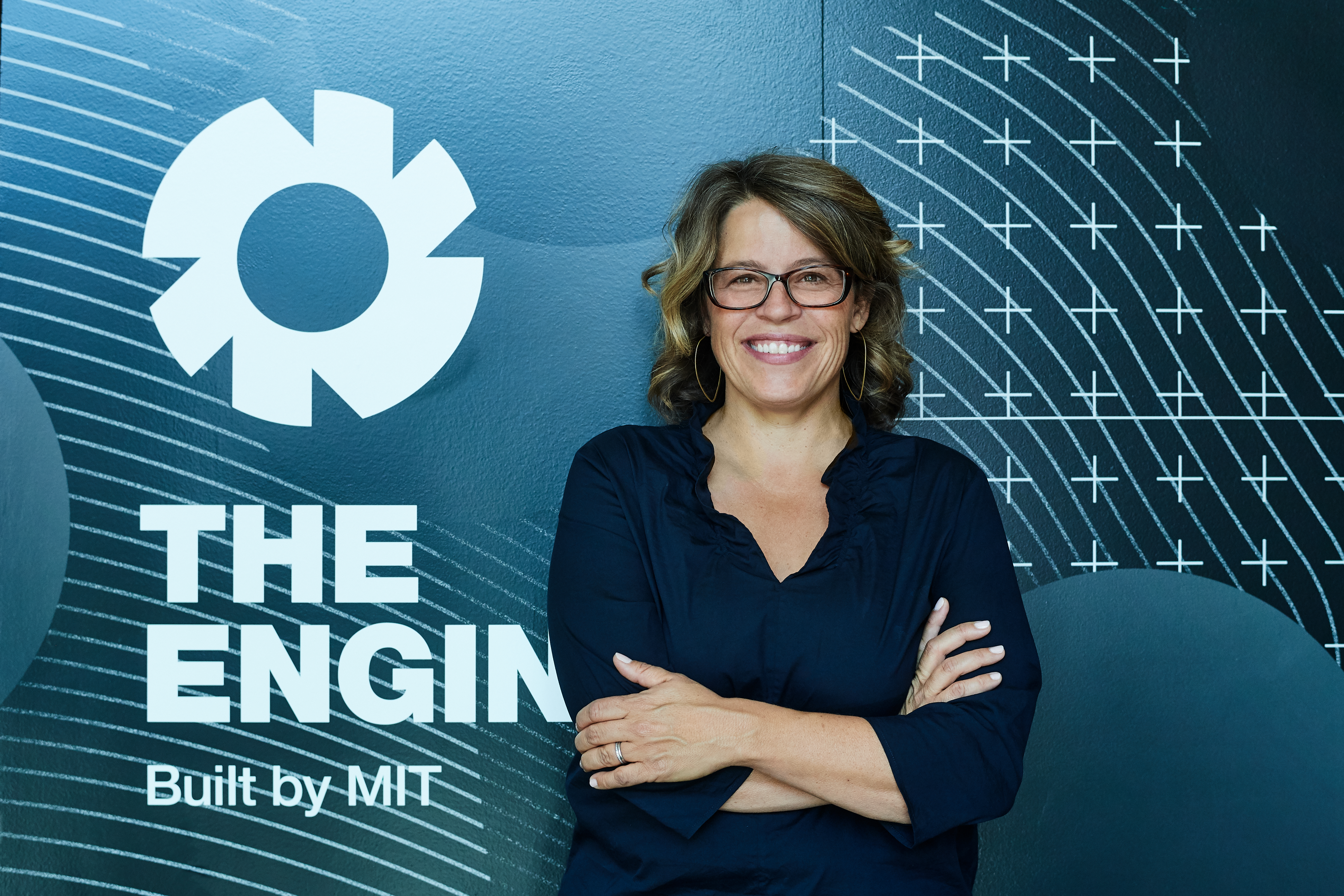Developing a Tough, Time-Consuming Technology? This Investor Is Interested

There’s often a disconnect between the pace at which professional investors want to recoup their money and the long lead time that technology companies in sectors like biotechnology and energy need to generate consistent revenue.
The Engine, a new venture capital fund based in Cambridge, Massachusetts, aims to bridge that gap by investing in breakthrough technologies that require extensive time and funding. Its first round of investments, which it announced on Tuesday, consists of seven startups (Analytical Space, Baseload Renewables, C2Sense, iSee, Kytopen, Suono Bio, and Via Separations) in sectors including aerospace, advanced materials, genetic engineering, and renewable energy.
Katie Rae, the president and managing partner, says the fund will provide its startups with long-term capital, lab equipment, expert lectures, and a network of advisors. She talked to MIT Technology Review about the challenges of investing in capital- and time-intensive technologies, why the Engine represents a unique venture capital model, and how she believes the strategy will pay off for investors.
How are you defining “tough tech,” and why don’t traditional VC firms invest in it?
We’re looking at semiconductors, advanced materials, energy, AI, biotech, and the Internet of Things. We’re also interested in “deep software,” which we define as software that takes multiple years to develop and features true algorithms. We won’t be funding consumer apps—we don’t view that as tough tech.

Historically, VCs have invested in some areas of tough technology, such as pharmaceuticals. That’s a really hard area with very long time frames and many failures, but if you win, you have 12 years to monetize those investments. That’s how that system works, and it’s attracted a lot of capital. The Engine is focused on other tough tech areas where it’s less obvious how [the system] should work, but these areas are incredibly important to society.
Who came up with the idea to focus on those sectors?
It basically came from MIT. They noticed that a lot of investments were being made in things that take less time in the beginning while some of the greatest inventions were lying on the lab floor, so to speak. There was this sense of “Let’s roll up our sleeves and try to fix this problem, since we see it.”
You could say the Engine was founded by MIT or built by MIT. We are a for-profit, public-benefit corporation and a fund that’s separate from MIT, but two of my eight board members are from MIT.
I understand that MIT also contributed $25 million to your first investment fund of $200 million, but that doesn’t mean you’re only funding MIT spinouts.
Right. Six of our first seven startups came out of MIT in terms of their founders being MIT graduates. Our other startup is from Harvard. That’s a consequence of the Engine being announced initially through MIT and the fact that MIT’s expertise aligns with the areas we’re investing into, and it’s a very entrepreneurial school. But we’re now seeing founders from across all the different [local] universities, and ideas from other regions, and we’re happy to look at those as well. This is just the first group of Engine startups; there will be 40 to 50 companies in this first fund.
How do you structure your investments, and how long are your investors willing to wait for an exit?
We tend to be the lead investor, the first capital in, but not exclusively. Usually we invest $250,000 to $2 million as our first check. The size of our stake depends on the deal. We want the founders to be running the company, so we’re always a minority investor.
We [target] about a one-to-four-year period in addition to what traditional venture would look at, which is generally four to seven years. People talk a lot about the “Valley of Death” for startups trying to transition from the lab—where there’s lots of NIH [National Institutes of Health] and NSF [National Science Foundation] funding—to [obtaining] venture funding and commercializing their technologies. We want to make sure that these founders’ dreams don’t die because they can’t raise capital or they’re not surrounded by the right expertise. There’s this [common phrase] in venture capital, “Come back when you’re at $1 million in revenue.” Sometimes these startups just need another year before they get to that point.

The Engine talks a lot about funding innovations that will solve the world’s most complex challenges. How do you weigh a startup’s social impact versus revenue projections?
We’re not trying to sacrifice returns. When we think of impact, we think of startups that will grow into substantial companies and have a positive human or planetary impact. I don’t think those goals are mutually exclusive. In energy, we’re trying to solve baseload energy storage for renewables. In drug delivery, we’re looking at whether you can reach parts of the body you couldn’t reach before and therefore extend human life. Those are impactful ideas that could also be very valuable [in terms of profits]. We’re trying to go for big wins, and be patient along the way. We’re not just scattering money.
Keep Reading
Most Popular
Large language models can do jaw-dropping things. But nobody knows exactly why.
And that's a problem. Figuring it out is one of the biggest scientific puzzles of our time and a crucial step towards controlling more powerful future models.
How scientists traced a mysterious covid case back to six toilets
When wastewater surveillance turns into a hunt for a single infected individual, the ethics get tricky.
The problem with plug-in hybrids? Their drivers.
Plug-in hybrids are often sold as a transition to EVs, but new data from Europe shows we’re still underestimating the emissions they produce.
Stay connected
Get the latest updates from
MIT Technology Review
Discover special offers, top stories, upcoming events, and more.